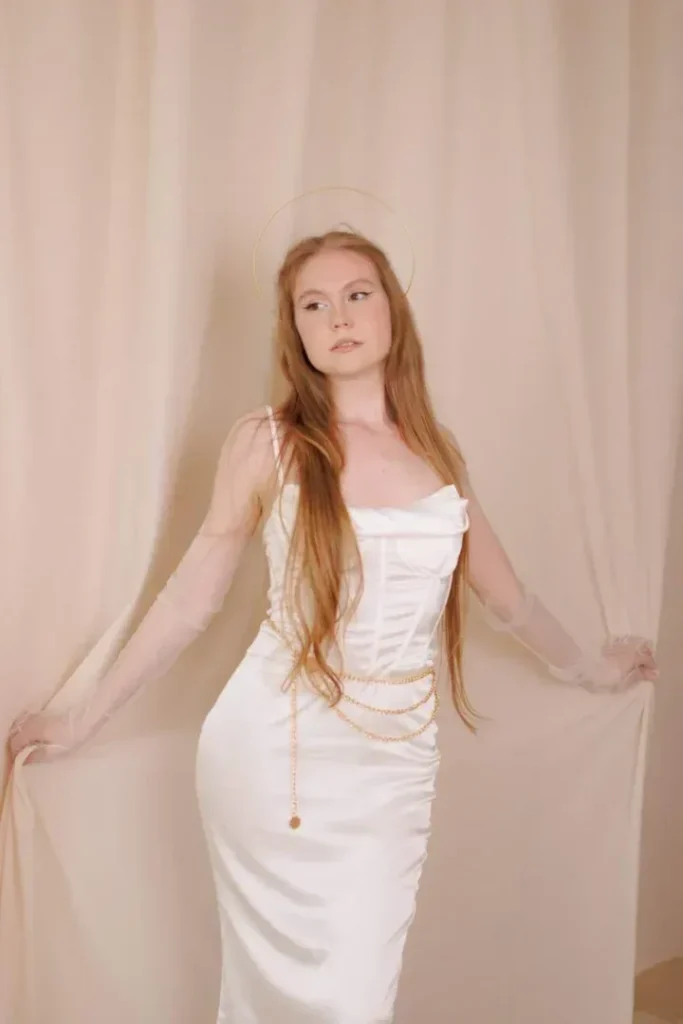So, you’re flipping through your favorite fashion magazine when you stumble upon a photo shoot featuring bell-bottom pants, psychedelic patterns, and platform shoes. Instantly, you feel a sense of nostalgic admiration for this unique style. But wait a minute, is this 70s aesthetic considered vintage or retro? The terms are often used interchangeably, but do they truly mean the same thing? Let’s uncover the distinction between vintage and retro in the context of the iconic 70s era.
Understanding the Terminology
Definition of Vintage
Vintage refers to items or products that are at least 20 years old, typically from a specific time period. These items are valued for their quality, craftsmanship, and historical significance. Vintage can apply to a wide range of items, including clothing, furniture, accessories, and more.
Definition of Retro
Retro, on the other hand, refers to items that are designed to imitate or evoke the style and aesthetic of a particular era, usually from the past. Retro items are often newly produced but feature design elements, colors, and patterns that were popular in a bygone era. Retro items are meant to capture the nostalgia and appeal of a specific time period.
The Overlap between Vintage and Retro
While vintage and retro are often used interchangeably, there is some overlap between the two terms. Both vintage and retro items are influenced by past eras and evoke a sense of nostalgia. The key distinction lies in the time period they represent: vintage items are actually from the designated time period, while retro items are newly made but inspired by that era.
The 70s Era: A Closer Look
Historical Context of the 70s
The 1970s was a decade marked by significant cultural, social, and political changes. It was a time of counterculture movements, such as the anti-war and civil rights movements, and also witnessed the rise of disco, feminism, and environmentalism. The 70s was an era of both rebellion and self-expression, and these influences were reflected in various aspects of culture and fashion.
Impact on Culture and Fashion
The 70s had a profound impact on both popular culture and the fashion industry. It was a decade of experimentation and innovation, with fashion designers pushing boundaries and challenging traditional norms. Clothing became more relaxed, with bell-bottom pants, maxi dresses, platform shoes, and bold patterns becoming staples of 70s fashion. The music, movies, and art of the era also played a significant role in shaping the cultural landscape.
Key Trends and Noteworthy Icons
The 70s introduced iconic fashion trends that are still recognized and celebrated today. Disco fashion, characterized by glittery fabrics, wide collars, and platform shoes, became synonymous with the era. The emergence of punk rock brought a rebellious and edgy style, with ripped jeans, leather jackets, and safety pins becoming fashionable. Noteworthy fashion icons of the 70s include Bianca Jagger, Farrah Fawcett, David Bowie, and Cher, who paved the way for new trends and styles.

This image is property of images.pexels.com.
70s as a Vintage Period
Qualifications for Vintage Status
The 70s era is now considered vintage as it meets the qualifications for vintage status. Vintage items must be at least 20 years old, and the 70s were more than four decades ago. Additionally, vintage items are known for their quality craftsmanship and historical significance, both of which can be found in 70s clothing, accessories, and other collectibles.
The Value of 70s Vintage Items
70s vintage items hold value for various reasons. Firstly, their historical significance makes them sought after by collectors and enthusiasts. Additionally, the quality and unique design elements of 70s fashion appeal to those looking for one-of-a-kind pieces. The scarcity of certain items from the era also contributes to their value, as well as the enduring popularity of 70s fashion trends.
Popular Vintage Items from the 70s
Some popular vintage items from the 70s include bell-bottom pants, maxi dresses, peasant blouses, platform shoes, and disco-inspired clothing. Accessories such as aviator sunglasses, wide-brimmed hats, and statement jewelry were also commonly worn during this time. Vinyl records, vintage cameras, and retro home decor from the 70s are also highly sought after by collectors.
70s as a Retro Period
Concept of Nostalgia
The concept of nostalgia plays a significant role in the retro design and fashion inspired by the 70s. Nostalgia refers to a sentimental longing or affection for the past, and retro items aim to capture this feeling by recreating the styles, colors, and designs of a bygone era. The popularity of retro fashion is often driven by people seeking to relive or experience the aesthetic and culture of the 70s.
Trends Revival
Retro fashion from the 70s has experienced a resurgence in recent years. Designers and brands often draw inspiration from the iconic trends of the 70s, incorporating elements such as wide collars, bold prints, and flared silhouettes into their collections. This revival allows individuals to embrace the iconic styles of the 70s while adding a modern twist to their outfits.
Influence in Current Fashion and Interior Design
The influence of the 70s retro aesthetic can be seen across various industries, including fashion and interior design. Many clothing brands launch dedicated retro-inspired collections that pay homage to the 70s, showcasing the flared pants, suede jackets, and floral prints that defined the era. In interior design, elements such as shag carpets, vibrant color schemes, and retro furniture pieces have made a comeback, reflecting the love for the 70s aesthetic.

This image is property of images.pexels.com.
Distinction between 70s Vintage and Retro
70s Items Recreated Today
Retro items from the 70s are often newly produced with designs and styles inspired by the era. These items capture the essence of the 70s but lack the historical authenticity of actual vintage pieces. They are still considered retro, however, as they pay homage to the era and evoke the same nostalgic feelings.
70s Items Preserved from the Time Period
On the other hand, vintage items from the 70s are original pieces that were produced and used during that era. These items have a historical connection and unique characteristics that make them highly coveted by collectors and enthusiasts. Vintage 70s items have aged over time, adding to their charm and authenticity.
Misconceptions about 70s Vintage and Retro
There can be some confusion and misconceptions surrounding 70s vintage and retro items. Some may mistakenly assume that retro items are vintage, when in fact they are newly made but inspired by a vintage era. It’s important to understand the distinction between the two to accurately label and appreciate these items.
The Impact of Time on Vintage and Retro Classification
The Temporal Factor in Vintage and Retro Labels
Time is an important factor in determining whether an item is considered vintage or retro. Vintage items are from the actual time period being referenced, whereas retro items are newly produced but inspired by that era. The temporal aspect helps to differentiate between these two categories and provides insight into their authenticity.
Decade Determination for Vintage or Retro
Determining whether a certain decade is considered vintage or retro depends on the current year. As time passes, each decade moves further away, eventually becoming vintage. For example, in the 2020s, the 70s are considered vintage, whereas the 80s and 90s may be seen as more retro. The changing of the decades influences the classification of items and how they are perceived in the present day.

This image is property of images.pexels.com.
The Commercial Value of 70s Vintage and Retro
Advantages of 70s Vintage Collectibles
70s vintage collectibles hold commercial value for several reasons. Firstly, their rarity and historical significance make them highly desirable among collectors, leading to increased demand and higher prices in the market. Additionally, the quality craftsmanship and unique design elements of vintage 70s items attract buyers who appreciate the authenticity and enduring appeal of these pieces.
Value of 70s Retro Reproductions
While retro items don’t hold the same historical value as vintage pieces, they still have commercial value. Retro reproductions allow enthusiasts to embrace the aesthetic and style of the 70s without the scarcity and high prices associated with vintage items. Retro items are often more accessible and affordable, making them appealing to a broader market.
Importance of Authenticity and Quality
Whether it’s vintage or retro, authenticity and quality are crucial factors that determine the commercial value of 70s items. Buyers value the originality and craftsmanship of vintage pieces, while retro items should still offer quality construction and materials to ensure customer satisfaction. Maintaining authenticity and quality is essential in preserving the integrity of the 70s aesthetic and its market value.
Influence of the 70s Vintage and Retro on Modern Day Culture
Revival of 70s Fashion Trends
The influence of 70s vintage and retro fashion can be seen in modern-day culture. Designers often reference the 70s aesthetic in their collections, incorporating elements such as flared pants, fringe details, and psychedelic prints. These trends continue to resonate with individuals who appreciate the timeless appeal and free-spirited nature of 70s fashion.
Popularity of 70s Music and Movies
The 70s was a significant era for music and movies, leaving a lasting impact on modern-day culture. Classic bands and musicians from the 70s, such as Led Zeppelin, Queen, and David Bowie, remain popular and influential today. Additionally, movies from the 70s, like “Saturday Night Fever,” “Jaws,” and “Star Wars,” continue to captivate audiences and inspire future generations of filmmakers.
The Retro Futurism of the 70s
The 70s era was also characterized by a unique concept known as retro futurism, which imagined a future with a nostalgic twist. The sleek and futuristic designs of that time, including space-age furniture and geometric patterns, combined with elements from past eras, created a distinctive aesthetic. This retro futurism influence can still be seen in modern-day technology, fashion, and design, highlighting the enduring impact of the 70s.
Public Perspective on 70s as Vintage or Retro
Perception Variations
The perception of whether the 70s is considered vintage or retro can vary among individuals. Some may view the 70s as vintage due to its distance from the present and the historical significance of the era. Others may see it as retro, focusing on the ongoing revival and influence of 70s fashion and design in the current day. Personal preferences and interpretations play a role in how people perceive and categorize the 70s.
Survey Results
Surveys have shown that opinions on whether the 70s is vintage or retro are split. Some respondents labeled it as vintage, highlighting its historical significance and the passing of time. Others saw it as retro, emphasizing the ongoing popularity and revival of 70s fashion trends. The diverse perspectives on this matter reflect the subjective nature of categorizing time periods and their associated styles.
Celebrity Endorsements
Celebrities have played a role in shaping public perception of the 70s as vintage or retro. Many high-profile individuals, such as fashion influencers and musicians, have embraced the 70s aesthetic and actively promote vintage and retro styles from that era. Their endorsement of 70s fashion and design contributes to its continued relevance and popularity in the public eye.
Final Verdict: Is 70s Vintage or Retro?
Weighing In Factors
Considering the definitions, value, and influence of the 70s, it can be concluded that the era is both vintage and retro. The 70s can be classified as vintage due to its historical significance and the age of the original items produced during that time. Simultaneously, the ongoing revival and inspiration drawn from the 70s in modern-day fashion and design make it retro as well. The 70s occupies a unique position in popular culture, encapsulating both vintage and retro elements.
Experts Opinion
Experts in the fashion and design industry often agree that the 70s is both vintage and retro, acknowledging the historical importance of the era while recognizing the ongoing influence and revival of its aesthetic. The blending of vintage and retro allows for a dynamic and ever-evolving portrayal of the 70s in the present day.
Influence on the Market
The market for 70s vintage and retro items continues to thrive, driven by the appreciation for the era’s aesthetic and the timeless appeal of its fashion and design. Collectors, fashion enthusiasts, and individuals seeking unique and nostalgic items contribute to the demand for 70s-inspired products, ensuring their ongoing market presence.
In conclusion, the 70s era can be considered both vintage and retro. Its historical significance, lasting influence, and ongoing revival in fashion and design make it a noteworthy period that continues to captivate and inspire. Whether you’re drawn to the authenticity of vintage 70s items or the nostalgia of retro reproductions, embracing the 70s aesthetic allows you to appreciate the timeless charm and cultural impact of this iconic era.
